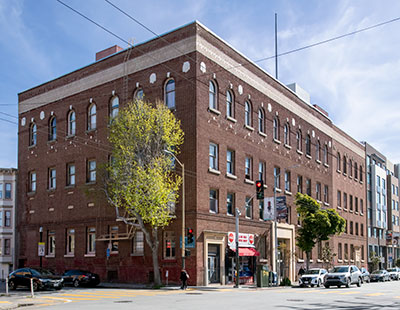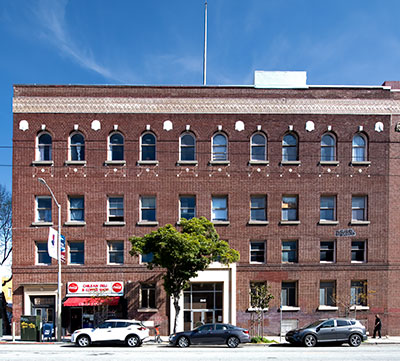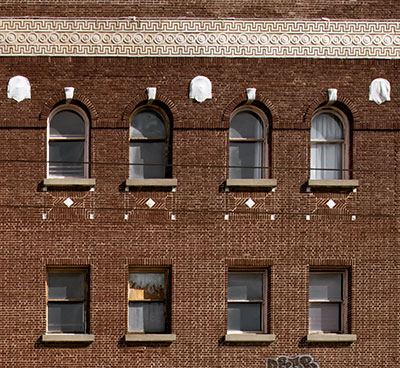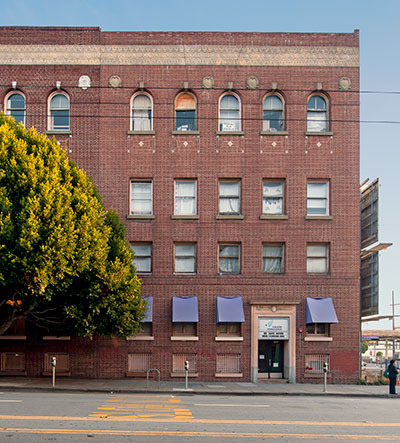San Francisco Landmarks
San Francisco Labor Temple
AKA Redstone Building
2926-2948 16th Street at Capp
Built 1914
Expanded 1939
The San Francisco Labor Temple, faced with red common brick laid in an English bond pattern, was built in 1914 by the San Francisco Labor Council as a center of activity for 130 labor unions.
In the early 20th century, plutocrats fancied buildings that resembled Gothic cathedrals (Russ Building) or Greek temples (San Francisco Mining Exchange). This modest building, which pointedly scorned architectural pretension, was designed to be a haven from the boss. It was the one building in San Francisco that the boss could not enter. There were pool and billiard tables, reading rooms, a ladies parlor, and medical care at prices workers could afford. There was space for family gatherings, picnics, holiday parties, benefit dances, sports leagues, and theatrical events. The seamstresses might have a dinner with the webpressmen. The Women's Bindery Union might have a dance with the plumbers.
The most significant historical events at the Labor Temple took place in July 1934 when the longshoremen and maritime workers led San Francisco workers in the General Strike.
On July 5, just outside of the strike kitchen at 113 Steuart, an unnamed policeman fired into a crowd of longshoremen and their sympathizers, shooting several of them. Two died. The deaths of Howard Sperry and Nick Bordoise stunned the public. This infamous day in San Francisco labor history became know as Bloody Thursday and galvanized the rest of the unions to support the struggle.
The San Francisco General Strike lasted four days, ending July 19, 1934. The strike was a success. Maritime workers won hiring halls with union-selected job dispatchers. Longshoremen won a six-hour day and thirty-hour week. Seamen won an eight-hour day.
As unions got larger, stronger and more numerous, the Labor Temple expanded in 1939 to meet the need. But soon, as unions got richer, they began to build their own union halls. By the 1950's, there were vacant offices in the building.
In 1968, with only ten unions still in residence, the Labor Temple was sold and renamed The Redstone.
From San Francisco Planning Commission Resolution 16638, October 2003.

In 1939, when the San Francisco Labor Council added a three-story east wing, additions to buildings were usually in the same architectural style as the original building and were built with the same materials. In 2023, the accepted architectural practice is to make additions as incongruous as possible.
I'm a 1939er myself.
As is King Charles III.
When we photographed the buildings, they looked much the same as they did when they were built.



